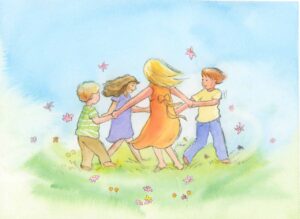Throughout our time on earth, humans have always had a fundamental connection with nature. And with the discovery of instruments dating back as far as 40,000 years, music has certainly been woven into our culture before written history. Experts from various fields of science believe that music even predated speech, as early humans communicated through sounds and movements that mimicked their natural world. While the research on the connectedness of music and language development is still relatively young and limited, the relationship of nature and music is well established.
The Relationship Between Nature and Music
All of the world is vibration. In fact, it can be said that earth itself has a constant “heartbeat” of 7.83 beats per second created by global electromagnetic resonances caused by lighting in the ionosphere. Called the Schumann Resonance, this “vibration of life” is believed to be connected to and have influence on bioregulation in humans. Despite the theory of a biochemical connection to nature itself, recorded history has shown that music and nature have been indisputably linked. Every known culture in the world partakes in some form of music. In fact, there is a scientific study devoted to the study of music and cultures called Ethnomusicology.
While it is hard to trace the origins of music in early humans, many primitive cultures have music that mimics and involves sounds of animals and the natural world. These were used for communication, hunting, storytelling, and ritual. Much later, nature continued to influence great classical compositions, including Beethoven’s Symphony No. 6 ‘Pastoral’, Vivaldi’s Four Seasons, or Brahms’ C Minor Symphony. Nature has continued to inspire music across the ages and all genres.
Using Nature to Teach Children’s Music
Nature based education is not a new concept but has gained attention in recent years because of the threat of climate change and increased severe weather events. Yet using direct interaction with the natural world has been utilized by teachers and caregivers for generations. In fact, a prominent nature-based education initiative, Nature Study, was followed in the United States between the 1890s and 1920s.

Early childhood music teachers will often take their classrooms outside to help develop listening skills while demonstrating the connection between nature and music. They may ask the children to sit still and listen to birdsongs or the running water in a babbling brook. This helps not only to demonstrate musical concepts, but also self-control and respect. Many songs about nature and the animal kingdom are featured in children’s music, while early children’s music curricula are based on the concept. Many modern musicians use natural sounds exclusively as content for their compositions and to teach others about the fragility of our ecosystem.
Finally, many instruments can be created with things found in nature including hollow logs, dried gourds, or even river rocks and sticks. But the instrument that can always be used anywhere is voice. Singing in and about nature inspires children to respect their environment while enjoying the multitude of musical sounds it provides.





